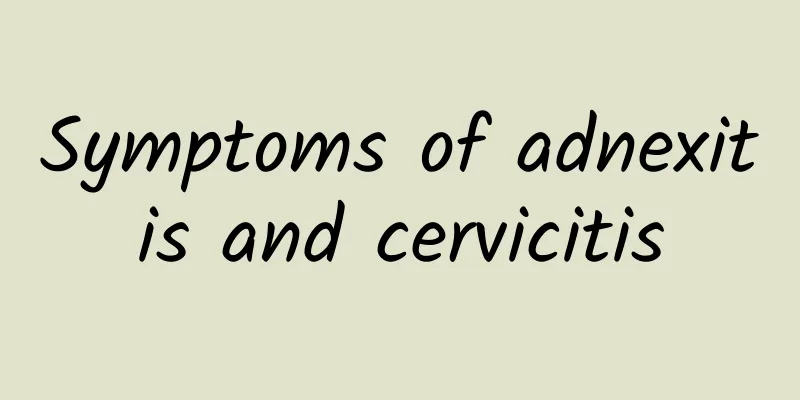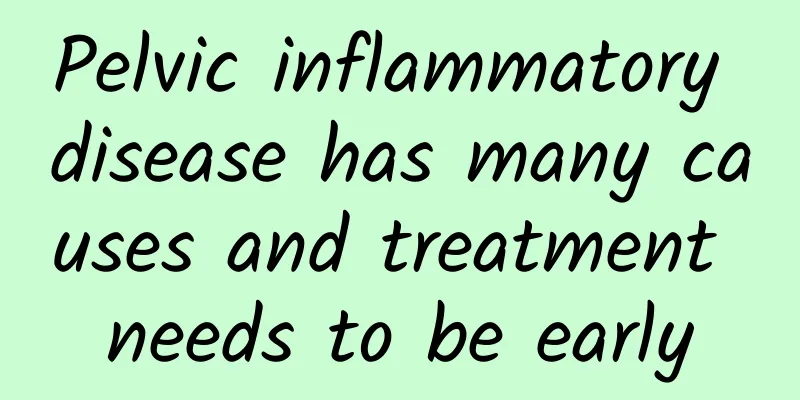Symptoms of adnexitis and cervicitis

|
Symptoms of adnexitis and cervicitis include lower abdominal pain, abnormal vaginal discharge, and pain during sexual intercourse, which require prompt medical treatment. Adnexitis is mostly caused by bacterial infection, while cervicitis is related to pathogen infection, cervical injury and other factors. Treatment includes medication, surgery and lifestyle adjustments. 1. Symptoms and causes of adnexitis The main symptoms of adnexitis are lower abdominal pain, fever, increased vaginal discharge and possible odor. The pain may radiate to the lumbosacral region, and in severe cases, it is accompanied by symptoms such as nausea and vomiting. Adnexitis is usually caused by bacterial infection, and common pathogens include gonococci, chlamydia, etc. Unclean sexual life, multiple miscarriages, and intrauterine surgery may increase the risk of infection. In treatment, antibiotics are the main means, such as cephalosporins, metronidazole, etc. For chronic adnexitis, Chinese medicine conditioning such as moxibustion and Chinese medicine fumigation also have certain effects. In life, pay attention to personal hygiene, avoid excessive fatigue, and do appropriate aerobic exercises such as walking and yoga to help recovery. 2. Symptoms and causes of cervicitis Symptoms of cervicitis include increased vaginal discharge, abnormal color such as yellow or green, pain or bleeding during sexual intercourse, and some patients may experience frequent urination and urgency. The causes of cervicitis are diverse, including infection by pathogens such as HPV, mycoplasma, cervical injury such as childbirth, surgery, and chemical stimulation such as improper use of vaginal washes. In terms of treatment, mild cervicitis can be treated with local medications such as metronidazole suppositories and clindamycin gel. Moderate to severe cervicitis may require physical therapy such as laser, freezing or electrocautery. In daily life, keep the vulva clean and dry, avoid using irritating washes, and consume more foods rich in vitamin C such as citrus and tomatoes to enhance immunity. 3. Prevention and lifestyle adjustment The key to preventing adnexitis and cervicitis is to maintain good personal hygiene habits, avoid unclean sex, and have regular gynecological examinations. In terms of diet, eat more foods rich in protein and vitamins, such as fish, beans, and green leafy vegetables, to enhance the body's resistance. Appropriate physical exercise, such as swimming and jogging, can help improve pelvic blood circulation and reduce the risk of inflammation. For patients who are already ill, take medicine on time as prescribed by the doctor and have regular checkups to avoid recurrence of the disease. The symptoms of adnexitis and cervicitis should not be ignored. Early detection and treatment are the key to avoiding complications. Through reasonable medication, lifestyle adjustments and regular check-ups, the condition can be effectively controlled and health restored. If related symptoms occur, seek medical attention in time to avoid delaying treatment. |
<<: Nursing for moderate cervical hypertrophy and erosion
>>: Can I eat mango if I have cervical erosion and hypertrophy?
Recommend
Is it normal to have brown discharge for a day or two before and after my period?
Is it normal to have brown discharge for a day or...
Detailed explanation of the symptoms of bacterial vaginosis
Nowadays, women are prone to bacterial vaginosis ...
How to take good care of adnexitis in daily life
Among the gynecological inflammatory diseases, ad...
Which is more serious, candidal vaginitis or pelvic inflammatory disease?
Vaginal candidiasis refers to vulvovaginal candid...
Does ovarian chocolate cyst affect pregnancy?
Ovarian chocolate cyst is a gynecological disease...
What should I pay attention to after being discharged from hospital for pelvic inflammatory disease?
After patients have undergone pelvic inflammatory...
What to eat to replenish blood after uterine fibroid surgery What to eat to replenish blood after uterine fibroid surgery
After surgery for uterine fibroids, the body need...
Meridian weight loss is effective! To balance your Qi and blood, learn these two tricks first
Obesity is the root of all diseases. Utilizing me...
The cause of cervical hypertrophy is the clinical symptom of increased leucorrhea
Severe cervical hypertrophy can lead to infertili...
Is infertility a symptom of pelvic effusion?
The commonly used method of examination for pelvi...
Can unmarried women get ovarian cysts? Don’t be too careless about these reasons!
Ovarian cysts are a major killer that seriously t...
Not suitable to move around? 10 flywheel advantages that pregnant women must know
During pregnancy, pregnant mothers are often relu...
What is the reason for scanty menstruation?
Women's bodies are relatively weak during men...
Introduction to the best treatment for chronic pelvic inflammatory disease
Chronic pelvic inflammatory disease is a relative...
What should I pay attention to when doing curettage surgery for thick endometrium?
What should be paid attention to when doing curet...









